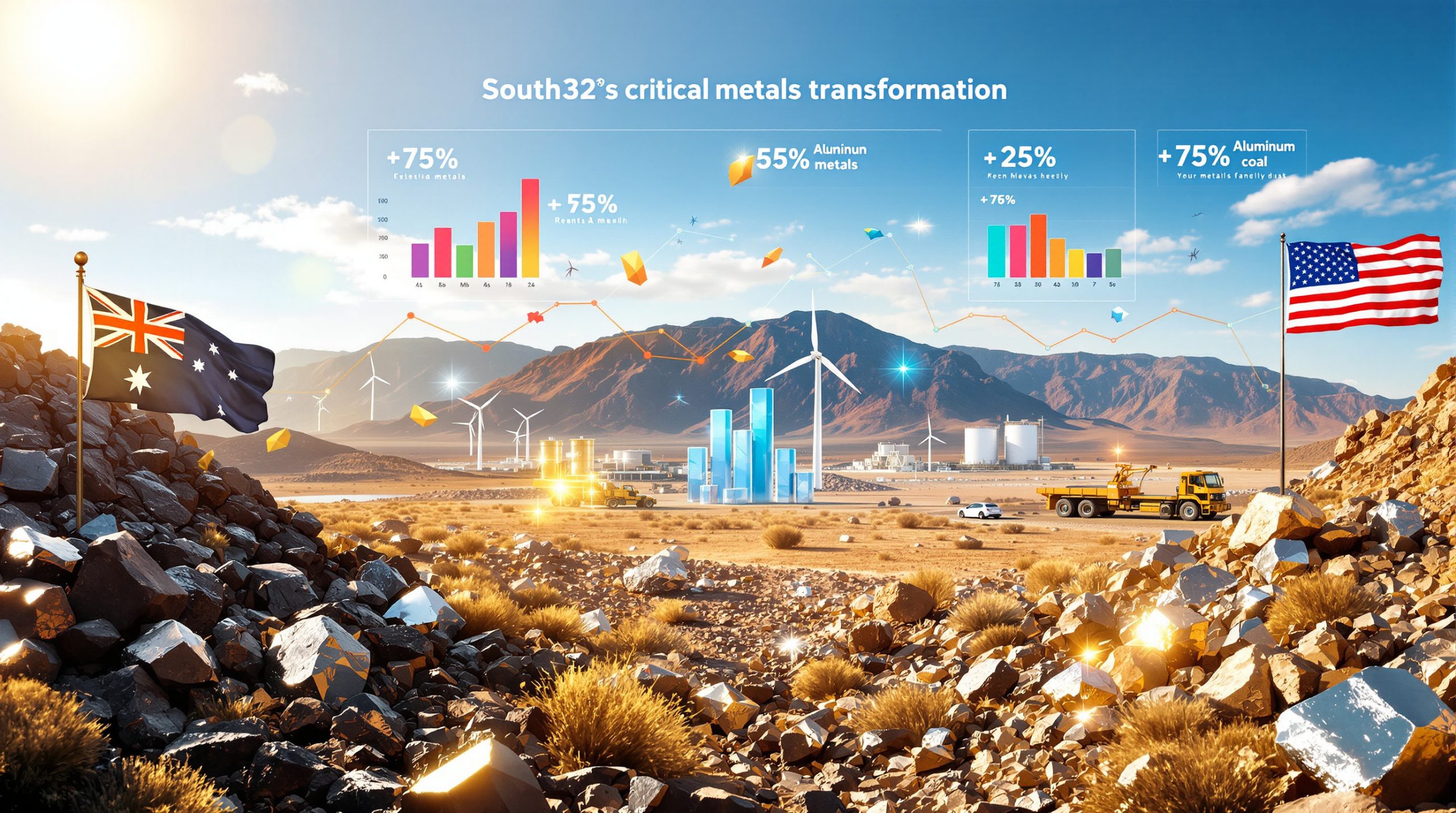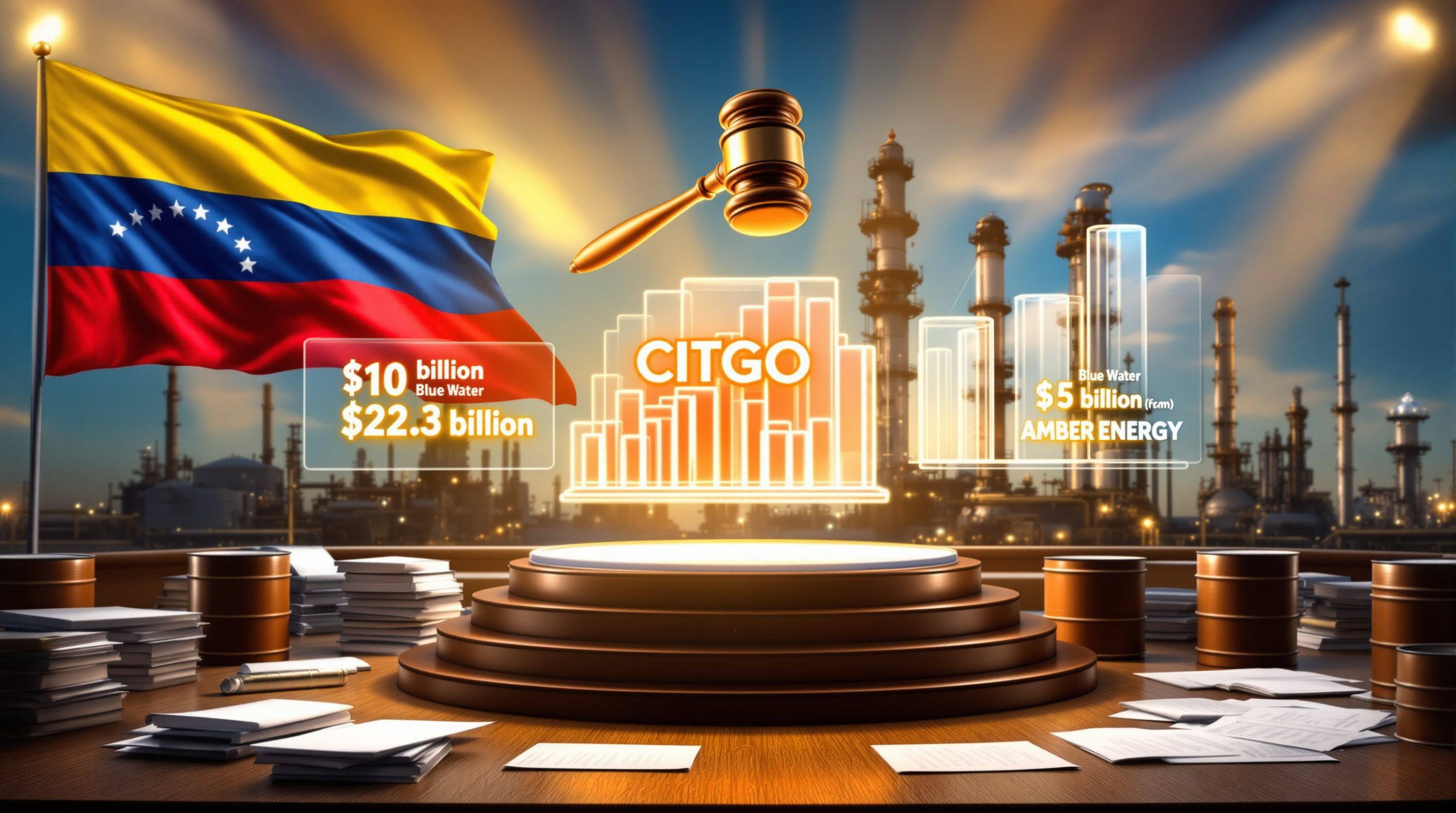Australia's critical minerals strategy continues driving sophisticated investment frameworks that secure technological independence while fostering international economic partnerships. These critical minerals deal structures encompass diverse approaches from equity participation to government-backed frameworks, each designed to address specific supply chain vulnerabilities and strategic objectives.
Furthermore, modern critical minerals deal architectures reflect heightened awareness of supply chain concentration risks, particularly given China's dominance across processing stages. Australia produces approximately 50% of global lithium yet processes less than 5% of lithium chemicals, highlighting the value-creation opportunity through downstream integration.
Investment-Based Partnership Models
Equity participation structures enable strategic buyers to secure long-term supply commitments while providing development capital. The Australia critical minerals reserve exemplifies this approach through the Australian Government's Critical Minerals Facility, offering A$2 billion in lending capacity through Export Finance Australia to reduce project financing risks.
These partnerships typically involve minority stakes ranging from 15-40%, allowing host nations to maintain operational control while benefiting from technical expertise and market access. Recent transactions demonstrate premium valuations for projects with integrated processing capabilities, often commanding 25-40% higher valuations than extraction-only operations.
Government-to-Government Framework Agreements
Bilateral arrangements establish overarching principles for mineral cooperation, creating enabling environments for private sector investment. The Australia-U.S. Climate, Critical Minerals and Clean Energy Transformation Compact, announced in May 2023, grants Australia unique access to U.S. Inflation Reduction Act benefits outside North America.
Under IRA provisions, qualifying electric vehicles must source 40% of critical minerals from the U.S. or free trade agreement partners, escalating to 80% by 2027. This framework creates substantial commercial incentives for Australian critical minerals producers while addressing American supply chain security objectives.
Supply Chain Integration Partnerships
Contemporary critical minerals deals increasingly emphasize vertical integration across multiple processing stages. Iluka Resources' A$1.2 billion Eneabba rare earths refinery project, supported by A$1.25 billion in conditional government financing, exemplifies comprehensive value-chain development.
Processing integration creates significant value multiplication opportunities. Spodumene concentrate typically trades at US$1,000-2,000 per tonne, while battery-grade lithium carbonate commands US$20,000-60,000 per tonne, representing 10-30x value enhancement through processing.
Geopolitical Drivers Reshaping Critical Minerals Agreements
Strategic Diversification Imperatives
China's market dominance across critical minerals processing creates systemic supply chain vulnerabilities. China controls approximately 85-90% of rare earth processing capacity and 60% of refined lithium production, driving international diversification initiatives.
Export control measures implemented by China throughout 2023, including restrictions on gallium, germanium, and graphite products, underscore the strategic importance of alternative supply sources. These measures accelerate investment in processing capabilities outside China's direct influence.
Trade Policy Integration
Critical minerals deal structures now incorporate comprehensive trade facilitation measures beyond traditional supply agreements. Preferential tariff arrangements and expedited customs procedures create competitive advantages for qualifying materials and equipment, effectively subsidising strategic partnerships.
| Geopolitical Driver | Deal Structure Impact | Implementation Timeline |
|---|---|---|
| Supply chain security concerns | Enhanced government backing and guarantees | 6-18 months |
| Technology transfer restrictions | Strengthened IP protection clauses | 12-24 months |
| Strategic competition dynamics | Accelerated project timelines | 18-36 months |
| Resource nationalism trends | Local processing requirements | 24-60 months |
Battery Materials Dominating Transaction Volumes
Technology-Critical Elements
Lithium, cobalt, nickel, and graphite continue driving transaction volumes, with global lithium demand projected to increase 40-fold by 2040 under sustainable development scenarios. Electric vehicle sales reached 14 million units globally in 2023, representing 18% of total car sales and driving unprecedented battery materials demand.
Pilbara Minerals' joint venture with POSCO demonstrates successful international processing partnerships, with their South Korean lithium hydroxide plant achieving commercial production in 2023. The partnership structure enables technology transfer while securing lithium supply commitments for Australian spodumene concentrate.
Rare Earth Elements Processing Premium
Beyond extraction capabilities, rare earth processing represents critical value-chain control points. Neodymium and praseodymium (NdPr), essential for permanent magnets in electric vehicles and wind turbines, experienced global demand of approximately 43,000 tonnes in 2022.
Lynas Rare Earths operates Australia's only integrated rare earth processing facility, processing Mount Weld ore through Malaysian facilities while developing the Kalgoorlie Rare Earths Processing Facility. Their U.S. Department of Defense partnership for heavy rare earth separation demonstrates strategic value beyond commercial applications.
Emerging Critical Materials
Antimony, tantalum, and specialised compounds for semiconductor applications command premium valuations due to limited supply sources and technological dependencies. Australia's 2023 Critical Minerals List includes 31 minerals, expanded from 26 in 2022, reflecting evolving technological requirements.
Regional Leadership in Critical Minerals Development
Australia's Geological and Regulatory Advantages
Australia holds world's largest economic demonstrated resources of lithium at 7.9 million tonnes lithium content while maintaining stable regulatory frameworks attractive to international investment. The Northern Australia Infrastructure Facility committed A$430 million to Arafura's Nolans Project, demonstrating coordinated government support for strategic developments.
Western Australia's Strategic Minerals Infrastructure Fund, established in 2023 with A$150 million allocation, focuses on common-use infrastructure for critical minerals precincts, reducing individual project development costs. This initiative significantly contributes to the WA resources economic impact.
North American Integration Initiatives
Canada's Critical Minerals Strategy, released in December 2022 with C$3.8 billion over eight years, identifies 31 critical minerals and establishes coordination mechanisms with U.S. supply chain initiatives. This trilateral cooperation creates integrated North American critical minerals value chains.
Emerging Producer Value-Addition Focus
African nations increasingly structure critical minerals deal arrangements emphasising local value addition and technology transfer components. These agreements often include mandatory processing requirements and skills development programmes, ensuring resource extraction generates broader economic benefits beyond royalty payments.
Government-backed critical minerals investments demonstrate 15-25% lower cost of capital compared to traditional mining projects, reflecting reduced sovereign risk perceptions among international lenders.
Financing Mechanisms Enabling Strategic Partnerships
Direct Equity Participation Models
Government investment funds acquire strategic stakes in critical projects while securing supply commitments. Export Finance Australia committed approximately A$1.5 billion to critical minerals projects as of June 2023, providing loans, guarantees, and insurance products that enable private sector participation.
IGO Limited's Kwinana Lithium Hydroxide Plant, commissioned in 2023 with 52,000 tonnes annual capacity, demonstrates successful domestic processing integration. The facility processes spodumene concentrate from IGO's Greenbushes operation into battery-grade lithium hydroxide.
Development Finance Structures
Multilateral development banks increasingly evaluate critical minerals projects based on strategic supply commitments rather than purely commercial criteria. The Initiative for Responsible Mining Assurance (IRMA) provides comprehensive standards across 26 principal requirements, with several Australian miners pursuing certification to access preferential financing terms.
Joint Venture Risk Distribution
Risk-sharing arrangements between international partners and local operators enable large-scale development while distributing technical and financial responsibilities. Arafura Rare Earths secured A$840 million in conditional finance from Export Finance Australia and Northern Australia Infrastructure Facility for their Nolans Project, demonstrating coordinated government support.
Processing Infrastructure Creating Strategic Value
Downstream Value Creation Opportunities
Processing infrastructure development represents the most significant value-creation opportunity in critical minerals deals. Australia's processing capacity gap creates substantial potential: while producing 50% of global lithium, Australia processes less than 5% of lithium chemicals globally.
Battery-grade lithium carbonate commands US$20,000-60,000 per tonne compared to US$1,000-2,000 per tonne for spodumene concentrate, highlighting value multiplication through processing. This 10-30x value enhancement drives increasing focus on domestic processing capabilities.
Technology Transfer Integration
Strategic partnerships increasingly include technology sharing arrangements enabling indigenous processing capability development. Lynas Rare Earths' partnership with the U.S. Department of Defense for heavy rare earth separation technology demonstrates knowledge transfer beyond commercial applications.
Processing stages for lithium demonstrate complexity requirements:
- Mining: Spodumene ore extraction
- Concentration: Spodumene concentrate production (6-7.5% Li2O)
- Conversion: Lithium hydroxide or carbonate production
- Cathode production: Battery cathode material integration
- Cell manufacturing: Final battery assembly
Australia historically focused on stages 1-2, with expanding domestic capacity for stage 3 through projects like IGO's Kwinana facility and planned expansions.
Regional Processing Hub Development
Multi-country agreements establish regional processing centres serving broader geographic markets while creating economies of scale. Lynas' Malaysian processing facilities demonstrate successful offshore processing models, though regulatory pressures increasingly favour domestic processing development.
Environmental and Social Governance Integration
Sustainability Standards Implementation
Contemporary critical minerals deal structures incorporate comprehensive ESG frameworks addressing carbon footprint reduction and community benefit sharing. Rio Tinto's cancelled Jadar lithium project in Serbia, despite US$2.4 billion estimated value and potential to supply 90% of Europe's lithium needs, demonstrates critical importance of community acceptance.
The project cancellation following environmental protests highlights social licence requirements extending beyond regulatory compliance. Modern agreements proactively address community concerns through transparent consultation processes and equitable benefit distribution mechanisms.
Indigenous Rights Recognition
Australian law requires negotiation with traditional owners through Indigenous Land Use Agreements (ILUAs) under the Native Title Act 1993. These frameworks ensure traditional owner participation in project governance and benefit distribution, creating sustainable operating environments.
Circular Economy Integration
Battery recycling could supply approximately 10% of global lithium and cobalt demand by 2030, with Europe's Battery Regulation mandating minimum recycled content: 12% cobalt, 4% lithium, and 4% nickel by 2031. These requirements drive investment in recycling infrastructure and create additional value streams within critical minerals deals.
What Are the Success Factors for Critical Minerals Deal Implementation?
Regulatory Harmonisation Requirements
Successful agreements require aligned regulatory frameworks between partner countries, including mining codes, environmental standards, and investment protection measures. Average development timelines for major Australian mining projects span 10-15 years from discovery to production, with environmental approvals requiring 2-5 years.
These extended timelines necessitate regulatory certainty and coordinated approval processes between partner jurisdictions to maintain project viability and investor confidence.
Infrastructure Development Coordination
Critical minerals projects require substantial infrastructure investments:
- Power supply: 50-200 MW for processing facilities
- Water supply: 500-1,000 litres per tonne for lithium processing
- Transport infrastructure: Rail or road access to ports
- Port facilities: Export capacity and handling equipment
Coordinated infrastructure development reduces individual project costs while creating economies of scale for regional development initiatives.
Market Access Guarantees
Long-term offtake agreements provide revenue certainty enabling project financing. Strategic buyer partnerships typically involve 5-10 year commitments with pricing mechanisms reflecting market conditions while providing downside protection.
| Success Factor | Implementation Approach | Typical Timeline |
|---|---|---|
| Regulatory harmonisation | Bilateral working groups and treaties | 12-18 months |
| Infrastructure coordination | Joint development planning | 2-5 years |
| Market access agreements | Strategic buyer partnerships | 6-12 months |
| Community engagement | Stakeholder consultation processes | 6-24 months |
Investment Market Implications
Public Market Valuation Premiums
Listed mining companies involved in strategic critical minerals deal arrangements often experience significant valuation premiums reflecting reduced market risk and secured revenue streams. Government-backed investments demonstrate 15-25% lower cost of capital compared to traditional mining projects due to reduced sovereign risk perceptions.
Lynas Rare Earths maintained market capitalisations in the A$5-7 billion range throughout 2023-early 2024, reflecting strategic value beyond pure commodity exposure. Share price volatility remained elevated, ranging A$5.50-8.50 as markets assessed geopolitical developments and processing capacity expansions.
Private Investment Attraction
Government-backed critical minerals initiatives create investment confidence attracting private capital to sector development. The Critical Minerals Facility's A$1.5 billion in commitments as of June 2023 leveraged additional private investment through reduced financing costs and project validation.
Supply Chain Integration Benefits
Companies participating in comprehensive critical minerals agreements gain competitive advantages through secured input costs and supply reliability. These benefits extend beyond immediate participants to downstream manufacturers accessing stable pricing and delivery schedules.
Technology Integration and Future Development
Automation and Operational Efficiency
Artificial intelligence and automation technologies reduce operating costs by 15-20% according to industry studies while addressing labour shortages in remote mining locations. Remote operations centres now control mining equipment from thousands of kilometres away, enabling continuous operations with reduced on-site personnel.
Future critical minerals deal frameworks increasingly specify technology integration requirements, ensuring operations remain competitive throughout multi-decade project lifecycles, particularly in supporting energy transition security objectives.
Climate Adaptation Considerations
Long-term agreements incorporate climate resilience measures ensuring operations adapt to changing environmental conditions. Water management systems and renewable energy integration become standard project components, reducing operational risks and regulatory compliance costs.
Strategic Stockpiling Coordination
The United States National Defense Stockpile, managed by the Defense Logistics Agency, contains approximately 42 different materials with recent focus on critical minerals applications for technology and clean energy. International coordination on strategic stockpiling balances supply security with market stability objectives.
Critical minerals deals represent sophisticated instruments for securing essential material supplies while fostering international economic cooperation. Success requires careful attention to technical, financial, and geopolitical factors influencing long-term project viability and strategic value creation. The convergence of supply chain security concerns, technological requirements, and environmental considerations creates unprecedented opportunities for well-structured partnerships that address multiple stakeholder objectives while generating sustainable economic value.
Market Intelligence: Critical minerals deals incorporating downstream processing commitments typically achieve 3-7 year development timelines, with processing infrastructure requiring additional 2-4 years for full operational capacity achievement.
Ready to Capitalise on Australia's Critical Minerals Boom?
Discovery Alert instantly identifies emerging opportunities in Australia's critical minerals sector through its proprietary Discovery IQ model, transforming complex ASX announcements into actionable investment insights before broader market recognition. Start your 30-day free trial today and position yourself ahead of the next significant mineral discovery driving Australia's strategic resource advantage.




